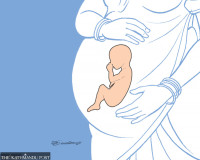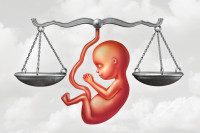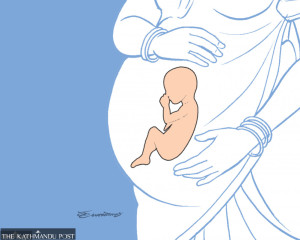Health
Ministry plans to screen pregnant women for mental health problems
A significant number of maternal deaths, during pregnancy or after childbirth, are suicides, which are preventable with timely intervention.
Arjun Poudel
The Ministry of Health and Population plans to screen pregnant women for mental health problems, which have been emerging as a leading cause of maternal deaths.
Officials hope that screening pregnant women for mental health problems and prompt treatment will help cut down on maternal deaths that have been rising alarmingly of late.
“We plan to start screening from Thapathali-based Paropakar Maternity and Women’s Hospital,” said Dr Gauri Shrestha, chief of the Safe Motherhood Programme at the Family Welfare Division under the Department of Health Services. “As part of the pilot, all pregnant women seeking service will be screened from the first and postnatal trimesters.”
A report on maternal mortality unveiled last year by the National Statistics Office showed that six percent of maternal deaths were due to self-harm (suicide), with the majority occurring during pregnancy.
The report shows that in every 100,000 live births, 151 women died from maternity-related complications.
Nepal had reduced the maternal mortality rate from 539 per 100,000 births in 1996 to 239 per 100,000 births in 2016—for which the country even received a Millennium Development Goals award. The report showed 88 maternal deaths were prevented in every 100,000 live births between 2016 and 2021. The study was carried out in 2021.
Every year, hundreds of women in the country succumb to preventable deaths from excessive bleeding after childbirth, also known as postpartum haemorrhage, and pre-eclampsia (pregnancy-related high blood pressure disorders), which have been identified as chief causes of maternal deaths in Nepal.
However, the 2021 study also shows that a significant number of maternal deaths are also caused by non-obstetric complications such as intentional self-harm.
Of the 611 maternal deaths on which the study was based, 67 percent occurred during and after childbirth, according to the report.
The census report shows 33 percent of the total maternal deaths occurred during pregnancy, six percent died during childbirth and 61 percent during the postpartum stage.
Of the total maternal deaths, nearly a half (47 percent) occurred in Lumbini and Madhesh provinces. The report shows that 10 percent of the victims were 15 to 19 years old. Fifty-seven percent of the deaths happened in health facilities and 26 percent at homes.
Of the total maternal deaths, 412 women (53 per cent) went to four antenatal care visits, and of the 173 women who died between seven to 42 days, 45 percent had received postnatal care.
As part of its efforts to reduce maternal deaths, the Health Ministry has made it mandatory for women to make eight antenatal care visits and three postnatal care visits.
Of the total maternal deaths, six percent (37 women) had undergone abortion or suffered a miscarriage. The report shows that 62 percent of the women took maternity services at state-run health facilities whereas 38 percent gave birth at private health centres.
The report shows family members of 83 percent of women who died during or after childbirth tried to get hospital care. Forty-eight percent of those who did use hospital services did not deem it necessary to seek institutional care, according to the report.
Delay in finding appropriate health facilities (57 percent), delay in reaching appropriate health facilities (33 percent) and delay in getting appropriate health services (40 percent) are three major causes of maternal deaths, the study shows. Of the total maternal deaths, 17 percent were attributed to all three aforementioned causes and 74 percent to at least one of three causes.
The report suggested improving the quality of services and the referral system and making ambulances available for emergency calls as possible ways for identifying the risks on time. The report also suggested carrying out maternal death surveillance regularly to reduce preventable deaths.
The Ministry of Health and Population has launched various programmes including free institutional delivery service and travel allowances for those opting for institutional delivery and antenatal visits. The ministry has also distributed misoprostol, a medication used to treat postpartum bleeding in new mothers, through female community health volunteers.
“As the annual health budget does not help us carry out screening of mental health programmes in many places, we are starting the programme as a pilot from the Maternity Hospital,” said Shrestha. “This programme will be expanded in the coming years to other districts, as it is impossible to prevent suicide of pregnant women without treatment of mental health problems.”
Nepal’s target under the UN’s Sustainable Development Goals is to reduce the maternal mortality rate to 75 per 100,000 births by 2030.




 5.6°C Kathmandu
5.6°C Kathmandu














